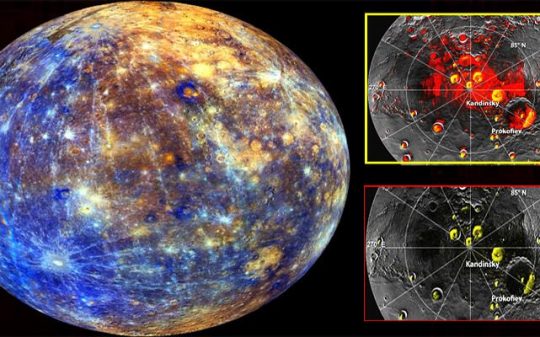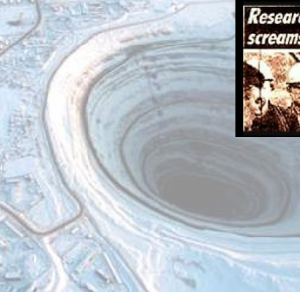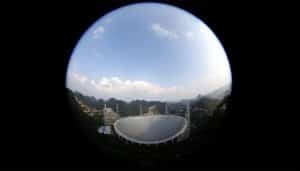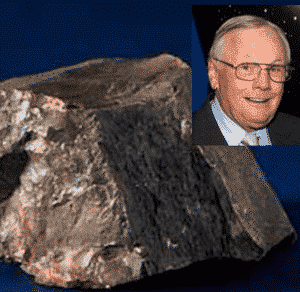Contrary to common beliefs that Mercury is a hellish celestial body without any support for life, NASA has recently shocked by confirming that the closest planet to the Sun contains water – frozen water. But that’s not all.
Based on the data picked up by the Messenger space craft, a total of three scientific papers have brought uncontested evidence that Mercury has entire regions of icy water that, if found on the Earth, would cover the entire surface of Washington D.C.
Considering that Mercury is the smallest planet in the Solar System with a radius of only 2,330 km and an orbital period of approximately 88 Earth days, the fact that it stands so close to the Sun and still has its crust enveloped in such a wide amount of ice is really formidable.
However, this isn’t the only shocking discovery made by the Messenger orbiter, as it also encountered organic material believed to have been brought millions of years ago by the impacting comets. The final results of the mission which ended on April 30, 2015, were bestowed in a press conference at NASA HQ in Washington D.C. Although the presented facts confirmed some of the previous speculations of scientists, it also brought novel and intriguing aspects.
Because Mercury is so close to the sun, its lack of atmosphere makes the planet to oscillate in temperature, going from extremely hot to extremely cold during a day. The temperature on the surface varies from 50 K (-369.67F/ -223.15C) to 700K (800.33F/ 426.85C).
But how is this possible if Mercury is cooking on a stove? Well, its orbit doesn’t allow for a full exposure to the Sun, meaning that some areas (like the North Pole where the ice was found) are always located in the shadow. Although there were numerous telescopes on Earth that gathered data about the searing planet for more than 20 years, the discovery of frozen organic material by the Messenger probe took NASA by surprise.
“It’s not something we expected to see, but then of course you realize it kind of makes sense because we see this in other places,” like icy bodies in the Kuiper’s Belt and comets, the planetary scientist David Paige of the University of California, Los Angeles, said in an interview.
“The explanation that seems to fit all the data is that it’s organic material,” said lead Messenger scientist Sean Solomon of Columbia University. “It’s not just a crazy hypothesis. No one has got anything else that seems to fit all the observations better.”
The peculiar organic matter is approximately twice as dark as most of Mercury’s surface, and its composition was probably mixed with ice brought by comets eons ago (the same comets that brought life on our planet).
Messenger entered orbit around Mercury in 2011, becoming the first spacecraft to do so. It eventually impacted the surface on April 30, 2015, after two mission extensions that allowed NASA to fully map the planet and also make the above mentioned novel discoveries.
“With images from MESSENGER’s orbital mapping campaigns, as well as targeted high-resolution images, we can now begin to assess the origin of plains on a global basis, and — when combined with data from MESSENGER’s X-Ray Spectrometer — their compositional variation,” said Brett Denevi, a planetary scientist in APL’s Space Department. “We find that volcanic rocks dominate much of Mercury’s crust, even in regions that are geologically complex and where impact cratering has destroyed many of the original surface features.”
These finds will help scientists determine more about how life formed in the solar system. It appears that organic matter is widespread in the cosmos, enduring the grimmest of conditions. Overall, it would seem that life always finds a way to hang out there until the conditions are right for it to furtherly develop.










